Diving fins: Everything you need to know
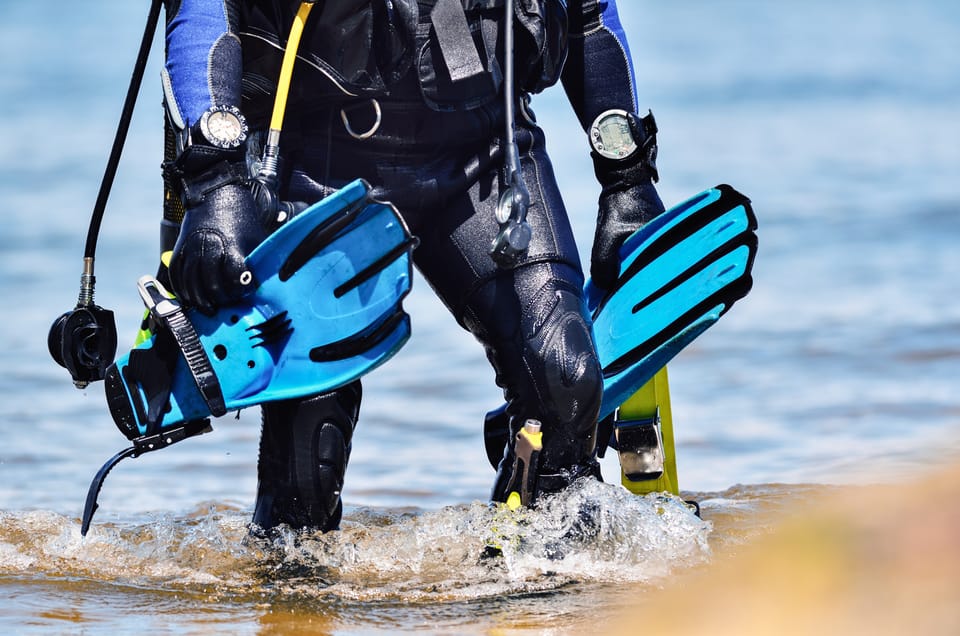
Table of Contents
If you have ever been swimming with and without fins, you probably realized just how faster you are with them! In scuba diving, that is exactly what fins are used for: Because you are carrying heavy equipment, fins are pretty much required to move the extra weight. By increasing your feet's surface area and the amount of water you displace with each kick, fins allow you to move further with less effort!
Fins are attached to your feet and are made up of multiple parts:
- The foot pocket is the part where your foot goes. It can be made of rubber or plastic. a traditional fin can either have a full foot pocket, meaning you can put on the fin without booties, or an open-heel, meaning the fin holds on the foot with a strap, in which case you do have to be wearing booties to prevent abrasion on your skin from the strap.
- The fin strap (usually made of rubber or silicone, with the higher-end fin straps made out of stainless steel springs) is the part in an open-heel fin that holds the foot in the foot pocket. some fin straps are adjustable, some are just flexible enough to fit a general foot size.
- The Buckle is the part used to adjust the fit of the fin strap.
- The Blade is the flat part of the fin that provides the increased surface area for mobility. The blade is usually made of plastic or rubber. The blades of some high-end freediving fins are made of carbon.
- The Rail is the outer part that holds the blade and the foot pocket together
If you're interested in learning more about the equipment scuba divers use, check out this article, which talks about all the equipment pieces.
Types of Fins
There are many different types of fins for different purposes. Let's have a look at the most common variants and what they are used for.
Full foot VS. open-heel
The first variance between fins is full-foot or open-heel fins. The difference is as described in the name: full foot fins accommodate the foot completely in the foot pocket. the pocket is usually made of rubber and isn't adjustable for different foot sizes. those fins are usually less stiff (which also means they are less powerful), and are usually used for snorkeling. You can use a full foot fin barefoot and there is no need for booties.
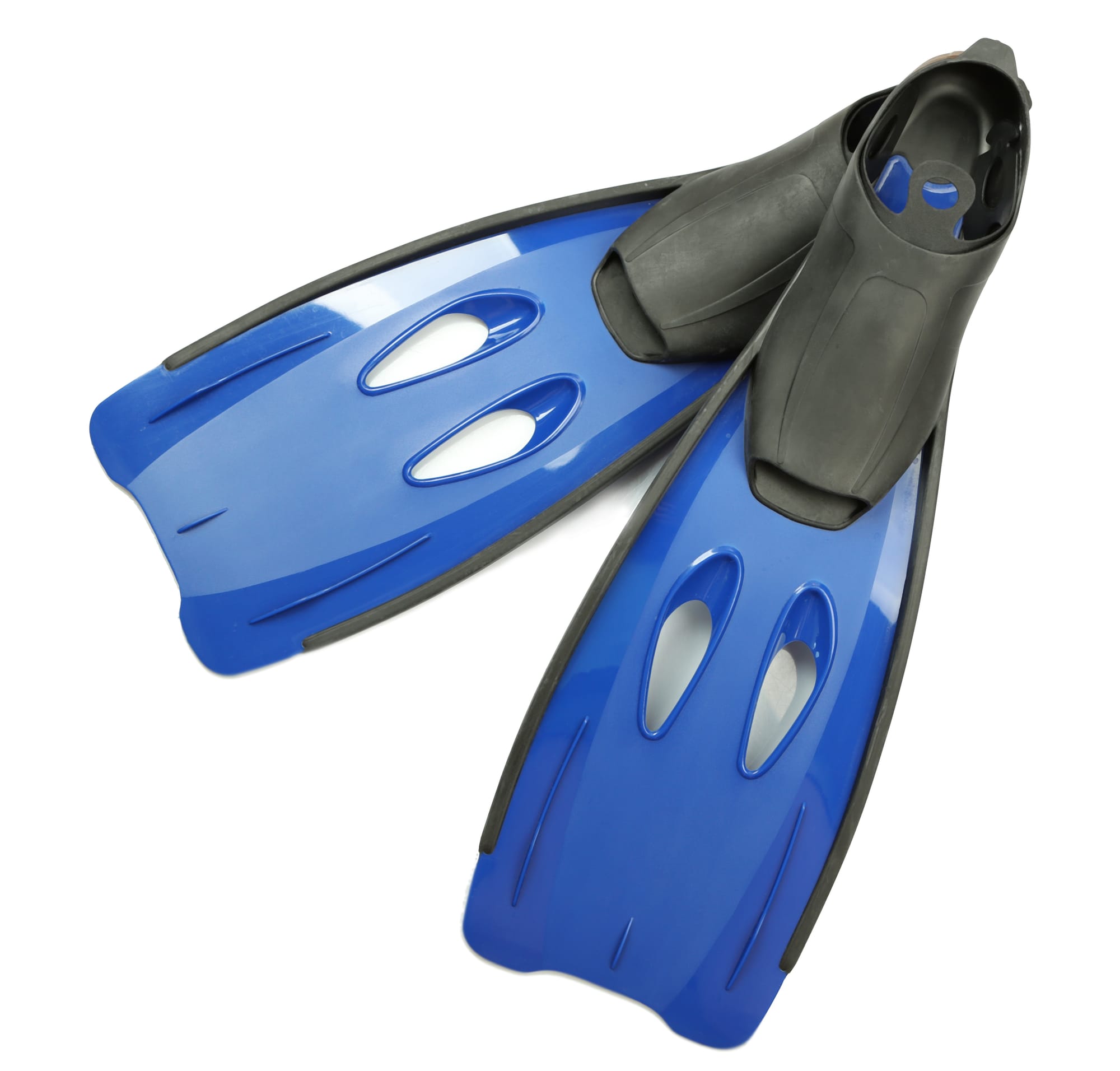
Open-heel fins, as the name suggests, are opened on the heel and retain the feet with a strap. Open-heel fins are the standard for scuba diving, although they can be used for snorkeling as well. Those fins require the diver (or snorkler) to wear booties as they are sturdier, and the strap rubbing against the skin would cause painful scraping.
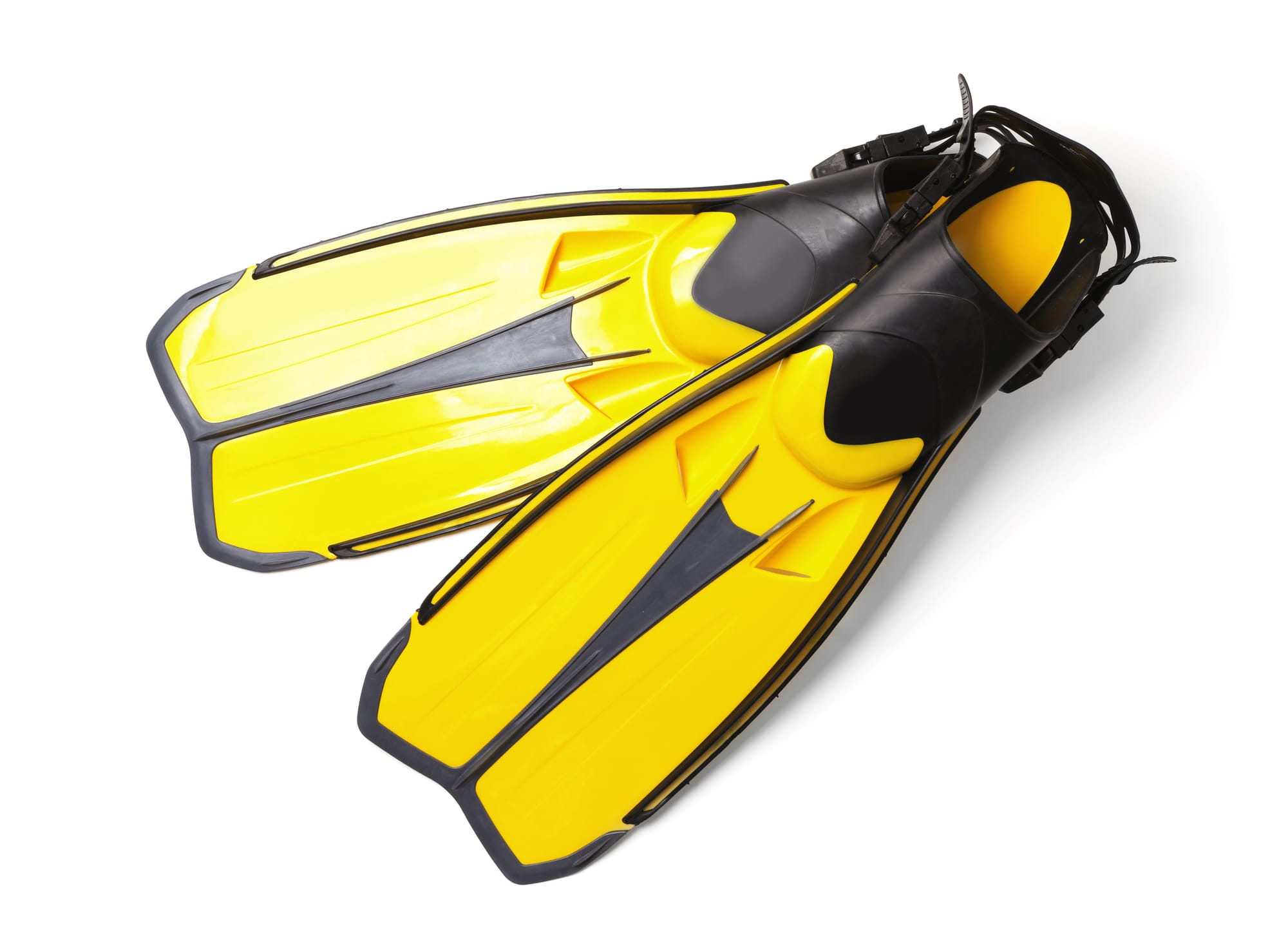
Booties VS. Barefoot
Although at first thought, it would seem going barefoot in a full-foot fin would be more comfortable, as it turns out, it is often quite the opposite: Booties act as protection from the environment for the diver.
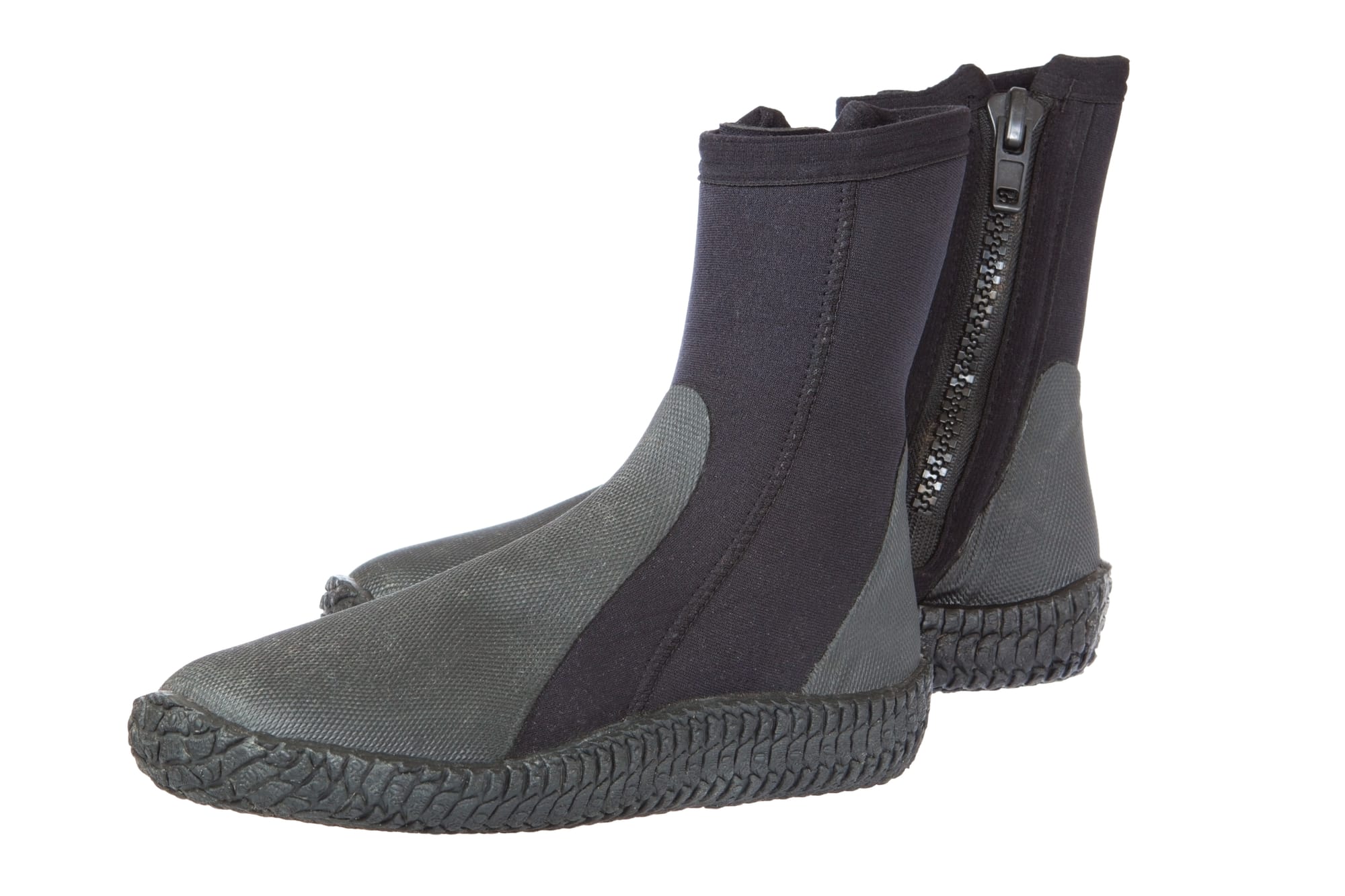
If you are shore diving, using booties to walk to the entry of the water could prevent you from cutting yourself on sharp rocks or glass. In countries where diving is predominantly from shore and the shore is quite rocky (such as Malta), using booties becomes common sense.
Wearing booties for diving is significant as it means greater thermal protection during longer dives (as booties are usually made of neoprene).
If you are wearing them, make sure to find booties that fit you well, and when looking for fins, try fins with the booties on, as you might require a slightly bigger fin size!
Short VS. Long fins
Another common type of fin variations is short and long fins. In general, short fins are more popular with technical divers or instructors as they provide greater maneuverability. That being said, they both have their advantages and disadvantages:
Shorter fins offer greater maneuverability, are more durable, and have a significantly longer lifespan. They are great to use in restricted spaces, such as tunnels, caves, or even wrecks! Short fins are perfect for maneuvers such as backward kicks or helicopter kicks. Drawbacks to these fins are that, due to their reduced surface area, they commonly have slightly less power and are also usually a bit more expensive, due to their higher quality.
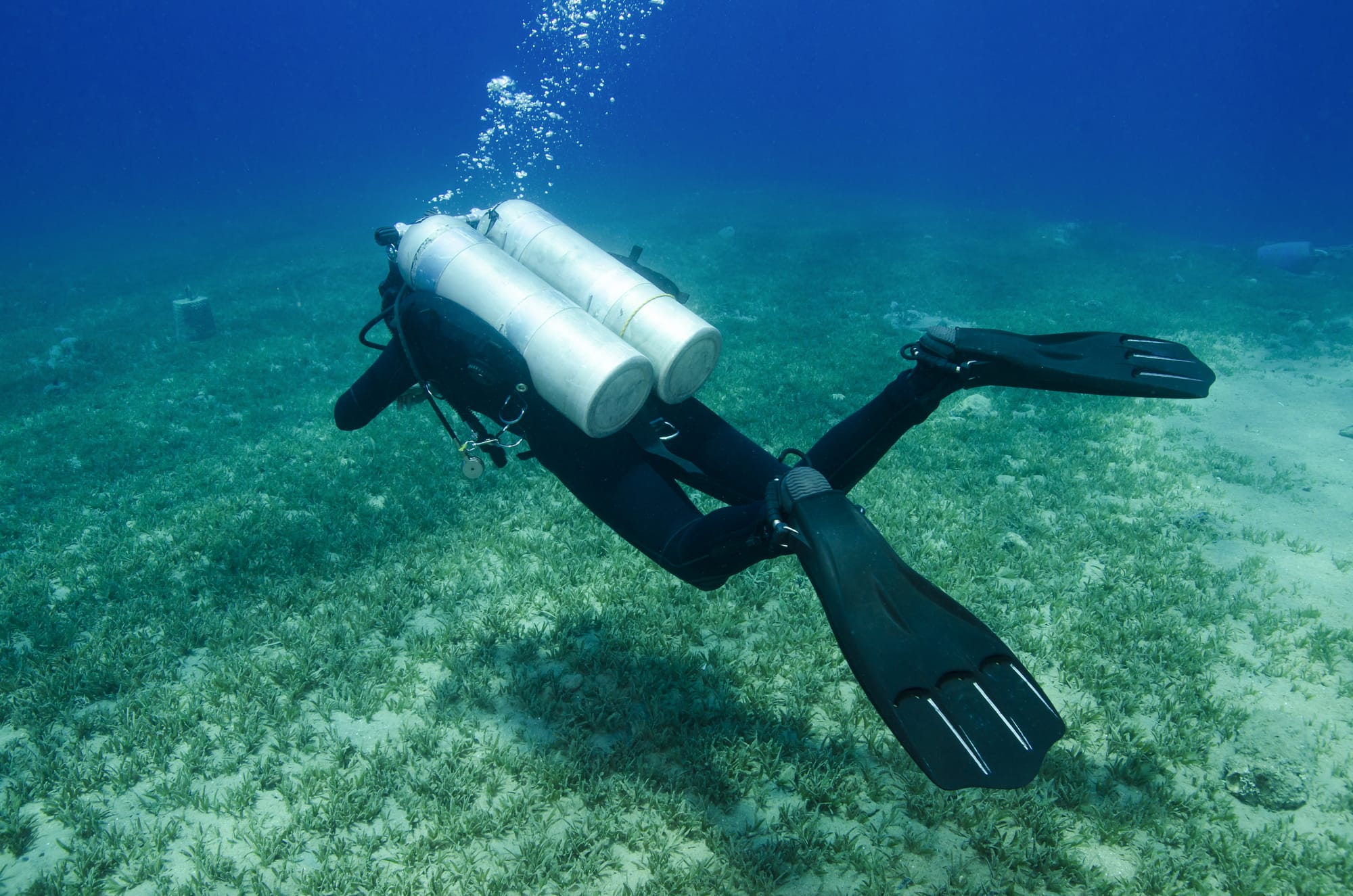
Longer fins are more widespread as they are usually more affordable, and although they trail behind in precision and maneuverability, they often provide greater power to move through the water!
Heavy VS. Light fins
Fins can either be "heavy" or "light", which respectively mean they are either less buoyant (meaning they sink) or more buoyant (meaning they float). Heavier fins are usually used in combination with a drysuit, as the air trapped in the leg of the drysuit tends to make your legs "floatier". The use of either fin is usually a question of improving your underwater trim.
Heavier fins are also usually stiffer, which can lead to leg cramps if you overexert yourself. They will also sink if left in the water, so you need to be careful to always hold them!
Split fins
Split fins are fins that have a "cut" in the middle of the blade. Although scuba divers often dislike these fins, they do have their use: the split in the blade reduces the fin's power and stiffness. This is very useful if you have any knee issues or easily get cramps from stiff fins.
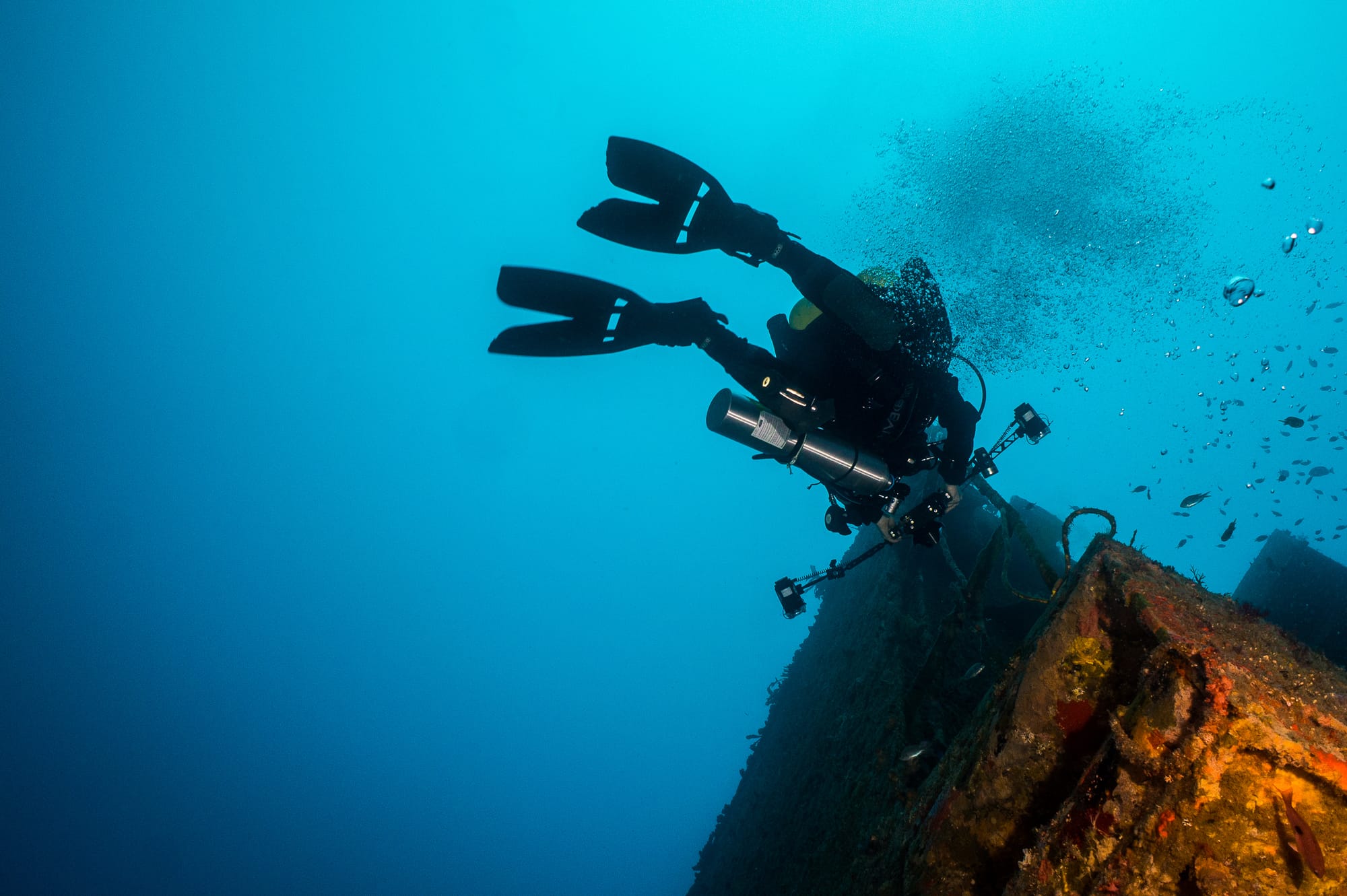
Freediving fins
The main characteristic of freediving fins is that they are longer than traditional scuba diving fins. Often, the blade is easily removable and interchangeable. They provide stronger propulsion and require less energy to go further. This is important, especially for competitive freedivers, as they need as much energy efficiency as they can get.
Freediving fins have a greater range of material available for the blade: from simple plastic to fiberglass, and even carbon for the highest-quality blades. Although freediving is out of the scope of this article, those fins can be used by divers looking for smoothness and efficiency in their movement (underwater videographers will find them especially useful).
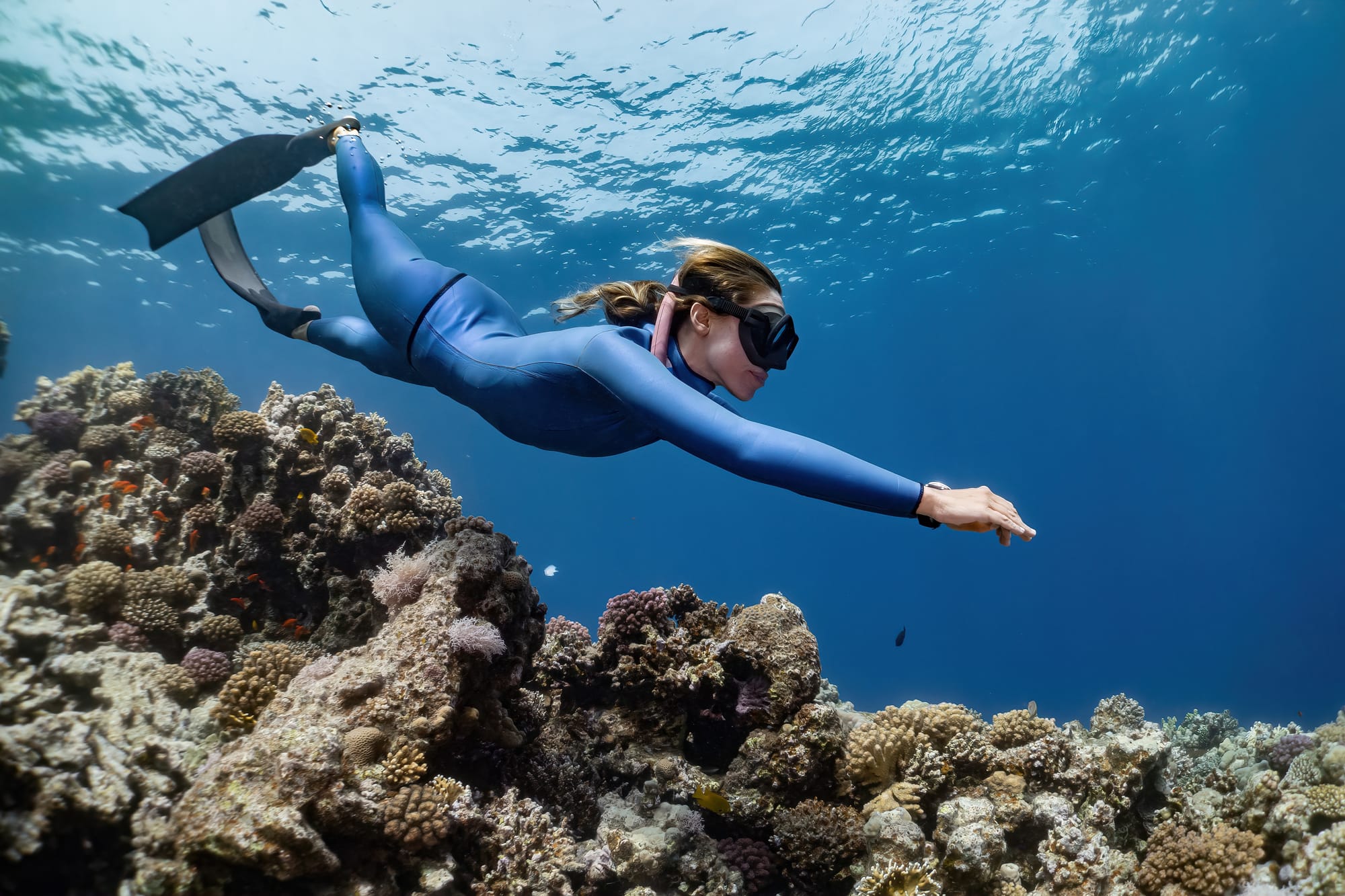
Monofin
Monofins, although rarely seen, are an alternative to traditional freediving fins. Users of monofins report them to feel more efficient, natural, and comfortable. Proficient monofin users can also practice mermaiding, which is the practice of freediving while wearing a mermaid tail. It is a popular practice for underwater photoshoots!
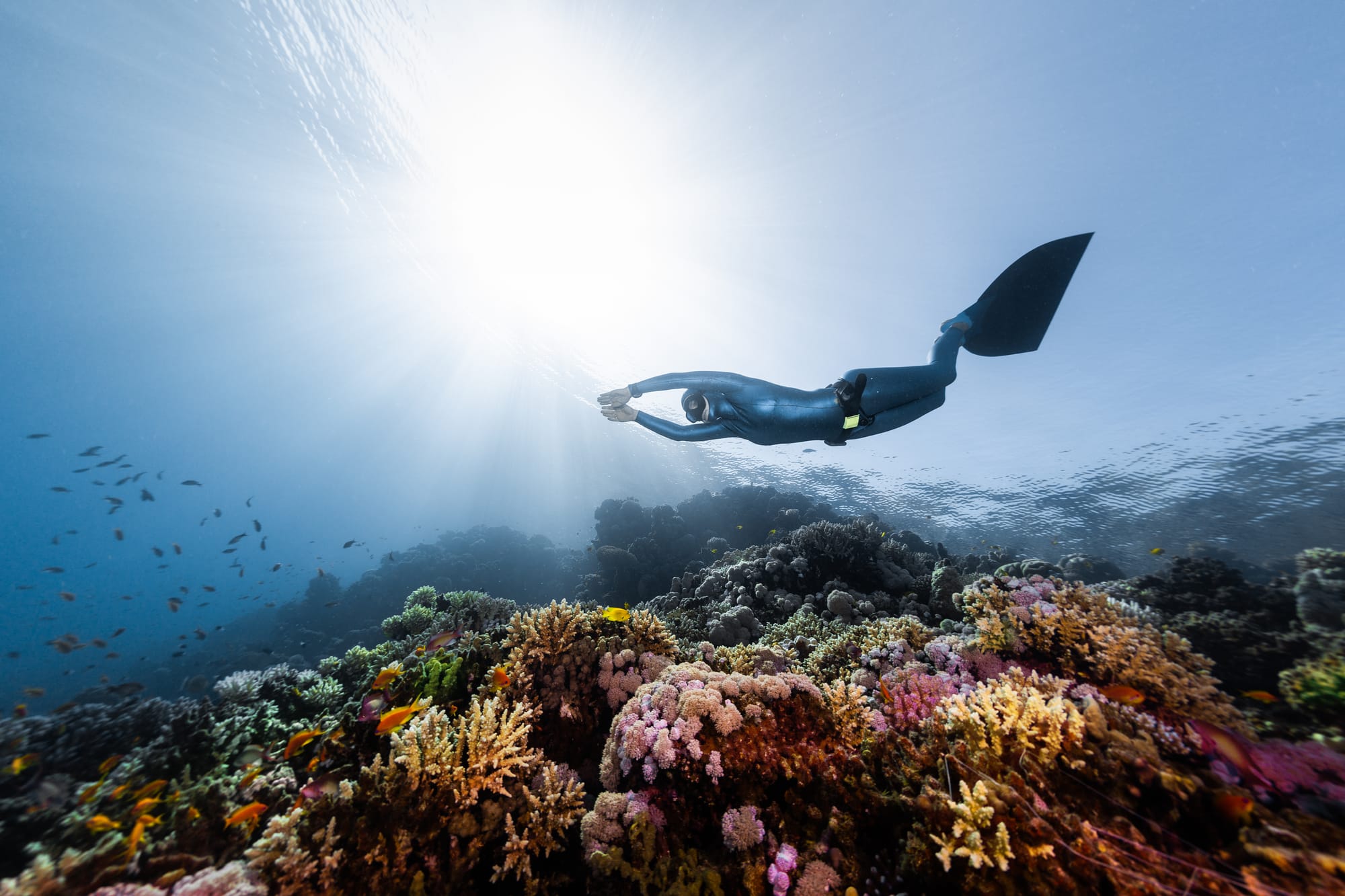
Choosing the right fin
The right fin for the right purpose
Each different kind of activity will require a different kind of fin that fits best.
Are you a diver, a snorkler, or a freediver?
If you're a diver, you'll probably want to go for an open-heel fin, paired with a pair of booties! If you're only looking to snorkel, full-foot fins will work perfectly fine; you can also use diving fins to snorkel.
If you're a freediver, although any fin will work, we strongly recommend using specialized freediving fins as they are more efficient and require less energy to travel a greater distance (and efficiency is important when you're on a single breath!).
Are you a beginner diver or an advanced diver?
If you're an advanced diver or if you're a beginner diver but know that you will dive often in the future, we recommend buying higher-end short fins (such as Apeks RK3). The reason is that, on top of being amazing fins, they are very durable and will last you your whole diving career if you take proper care of them. Shorter fins also help you be more precise in your movement, which can be used to their full capability by experienced divers!
If you're a beginner diver and aren't sure yet, standard entry-level fins are completely fine until you're ready to take the next step!
Are you an underwater photographer?
If you want to take your photography to the next level, you have two options: either short and nimble fins to position yourself perfectly in the water and get the perfect angle for the shot. The other option is if you're more into videography rather than photography, it is quite common for underwater videographers to use freediving fins, as it makes their movement more smooth, and gives them less shaky footage!
Are you wearing a wetsuit or a drysuit?
Using a drysuit compared to a wetsuit will make you more buoyant and slightly more challenging to move through the water. A lot of drysuits require the use of diving shoes on top of their integrated boots to prevent wear and tear: for this reason, using a larger size fin is common when using a drysuit. Some fins have a heavy version (for example, the Apeks RK3 has the HD version), being stiffer and heavier, which will prevent your legs from being too "floaty" while using a drysuit.
Are you a technical diver?
For technical divers, the usual fins of choice are short, durable fins, such as Scubapro Jetfins or Apeks RK3. The reason is that it increases your maneuverability and precision, which is useful, especially in tight spaces where moving up silt or rust (such as caves or wrecks) could cause an issue!
The drawback with shorter fins, however, is that they have slightly less power than their longer counterparts, and as technical divers, you often carry multiple extra cylinders, which can make it tricky to move through the water. Some short fins (such as the OMS Slipstream) counteract that by making their fins wider and firmer.
Do you have leg issues?
If you have weaker legs, knee issues, or anything related to that, avoid going for fins that are too stiff, as you might hurt/injure yourself; instead choose flexible/soft fins. In this scenario, split fins would be perfect for you!
Finding a well-fitting fin
Like the rest of your scuba equipment, it is important to find fins that fit you well. The easiest way to find a pair of fins that fits you is simply to look for a shoe size. If you are planning on getting open-heel fins that fit with booties, find the pair of booties that fit you first, then, while wearing them, try on the fins and make sure they fit you while you're wearing the boots!
The feeling you're looking for to make sure they fit is that it should feel comfortable (meaning not too tight) on the foot. At the same time, wiggle your foot: if the fin moves too much, you will either have to adjust the strap to make it smaller or find a smaller size if the straps aren't adjustable. If it feels comfortable and doesn't move when you wiggle your foot around, then the fin is the correct size for you!
Care and maintenance tips for fins
Care and maintenance are an important part of every piece of equipment. Contrary to other parts, such as regulators, BCDs, or tanks, fins do not need heavy annual or bi-annual maintenance to keep a long shelf life. Knowing how to wash and store them properly will be enough to make them last as long as possible. Well-maintained fins can last dozens of years, if not your whole diving career!
- If you use a fin with a strap, make sure not to pull too much when putting the fin on or taking it off, as it might damage the strap over time!
- If your strap breaks, it is easily replaceable. We recommend always carrying a spare fin strap in your save-a-dive kit.
- Avoid walking on rough surfaces with the fins on. Firstly, you risk falling down; secondly, it damages the fins.
- When you are finished with your dive, wash the fin with freshwater; this avoids salt crystals from forming or harmful chemicals staying on and damaging the fin.
- When storing your fins, do not leave them standing on their blade, as this bends the blades over time! On top of that, favor storing them in a dry and cool place.
Common issues and mistakes with fins
Cramps: It is quite common (especially if the fin is stiff) to get leg cramps (usually at the calves or the hamstrings). If that should happen, straighten the leg where the cramp is happening, stretch to grab the extremity of the blade and pull it towards you, as if you were stretching the back of your leg: this should appease the cramp. If you are not able to grab the extremity of the fin, ask for your buddy to help you!
Kicking technique: Finding a proper kicking technique can be somewhat of a challenge for new divers. The first thing to know is that you shouldn't "pedal" as if you were riding a bicycle; instead, the movement should come from your hips, with your legs straight. The movement should be relaxed and slow: this is called the flutter kick. There are more advanced kicking techniques that exist, but the flutter kick is the most basic one you should learn!

If you want to learn more about kicking techniques and trim in detail, read this article, which will teach you everything you need to know!
Price range
Low-range fins: The cheapest fins you can find will be around 20€, although at that price, you will be limited to snorkeling fins. If you are looking to buy cheap diving fins, you can expect to pay around 50€. For that price, you will find an entry-level long fin with an open heel.
Mid-range fins: You will start finding more serious diving fins between the 80€-120€ price range. Although the price is slightly steeper, they are also usually more interesting for serious divers, as they come with interesting features such as adjustable heel strap, variable length, weight, etc...
High-end fins: High-end fins usually include technical diving fins, meaning Jetfins, the OMS slipstream, Apek's RK3/RK4, etc... Although they are priced higher (170-200€), they are the best quality you will be able to find on the market, possibly lasting your whole diving career (if you take care of them!).
FAQ
Q: Can you use scuba fins for snorkeling?
It is completely fine to use scuba fins for snorkeling: scuba diving fins are usually slightly stiffer and more powerful, and you might have to kick slower to avoid leg cramps. Don't forget the booties if you are using diving fins!
Q: Can you use scuba fins for freediving?
Although you can use scuba diving fins for basic freediving, we recommend using proper freediving fins, especially at higher levels to get the best efficiency you can get.
Q: Can you use snorkeling fins for diving?
Snorkeling fins are softer and not as powerful, and you might therefore have a slightly harder time moving through the water. However, it shouldn't be a major issue!
Q: Can I scuba dive without fins?
We don't recommend scuba diving without fins! You will find that you'll have a very hard time going forward, and your trim will be harder to maintain.
Q: How long do scuba fins last?
It all depends on the quality! Good quality and well-maintained fins can last more than 10 years!
Q: What fins do Navy Seals/Military use?
Navy Seals/military personnel use short, wide, and heavy fins, such as the Jetfins, RK3s, or the IST Rocketfins.
Q: Are they called fins or flippers?
Scuba diving fins are called "fins" and not "flippers". This is a common misconception. Flippers are on fish, dolphins, etc...
